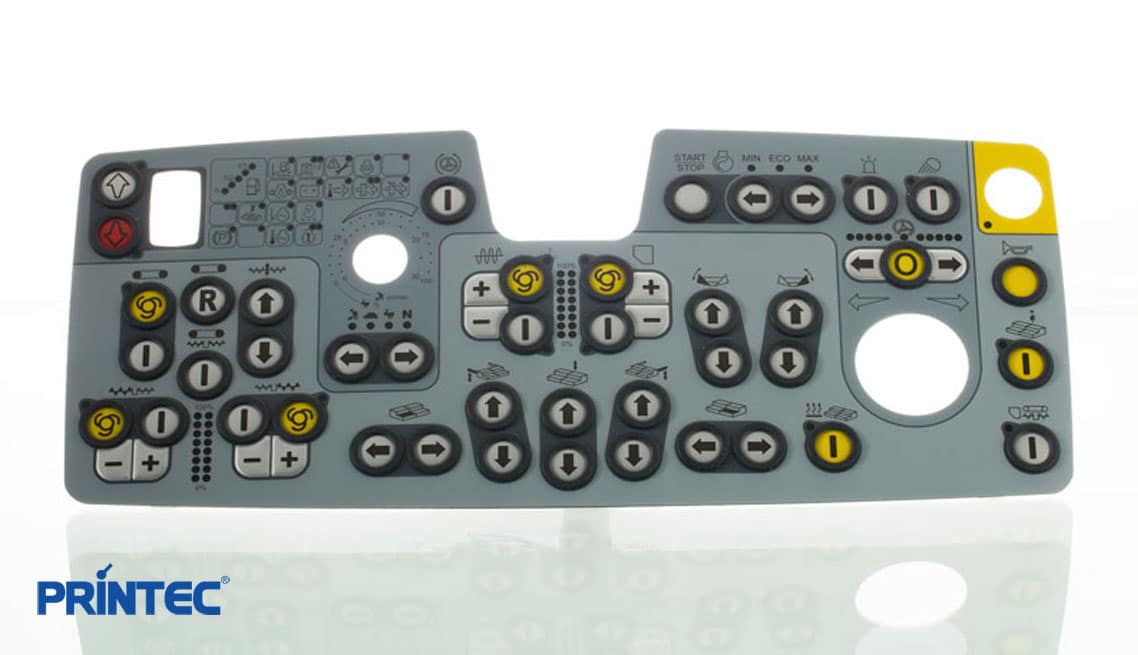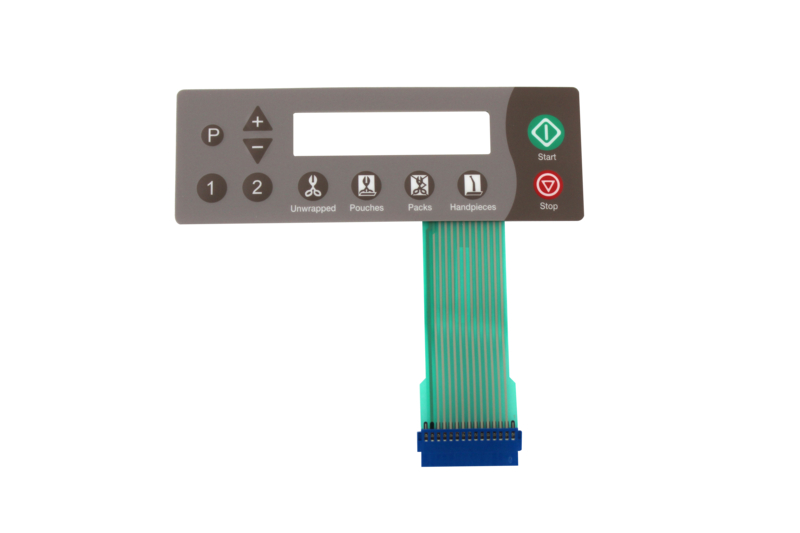When special application needs arise, a specialized membrane switch manufacturer is the ideal choice.
When special application needs arise, a specialized membrane switch manufacturer is the ideal choice.
Blog Article
All About Membrane Layer Switch Over: Comprehending Its Layout and Functionality
When you consider the control user interfaces in modern-day gadgets, membrane switches frequently come to mind. These parts are a lot more than simply switches; they mix design and capability flawlessly. Comprehending how they function and what makes them reliable can change your point of view on daily electronic devices. But, there are subtleties to their design and performance that you could not understand. Let's discover what sets membrane changes aside from other control systems.
What Are Membrane Switches?

Membrane layer switches can likewise be customized concerning form, size, and graphics, enabling manufacturers to develop distinct user interfaces customized to details items. On the whole, membrane switches play a significant duty in improving customer experience throughout a broad array of applications.
Just How Membrane Switches Over Job
When you press a key on a membrane layer switch, it activates a simple yet reliable device. The leading layer, usually constructed from adaptable product, lowers onto a conductive layer underneath it. This action bridges the gap between conductive traces, completing an electric circuit. As quickly as the circuit closes, it sends out a signal to the gadget's controller, which analyzes your input.
You'll see that the responsive responses differs based on the button design, supplying either a soft click or an extra pronounced feedback. When you release the secret, the membrane go back to its original position, reopening the circuit and stopping the signal. This process takes place almost immediately, guaranteeing a receptive customer experience.
Membrane layer switches are prominent due to their resilience and resistance to dirt and dampness, making them excellent for various applications, from house devices to clinical gadgets. Recognizing this procedure aids you appreciate their widespread use.
Trick Components of Membrane Buttons
Understanding the crucial components of membrane layer switches is fundamental for understanding their performance and style. At the core, you'll discover the graphic overlay, which provides the aesthetic user interface for individuals. Underneath that, there's a spacer layer that separates the circuit layers, making certain that they don't make call up until pressed. The circuit layer is where the magic occurs; it is composed of conductive traces that finish the circuit when you push the switch. An additional necessary element is the glue support, permitting the switch to abide by surface areas safely. The protective layer guards versus ecological variables and use, prolonging the button's life-span. Each element plays a substantial role in ensuring dependable efficiency and user communication. By comprehending these parts, you'll obtain understanding into how membrane layer switches operate and their relevance in different applications.
Products Used in Membrane Change Layout
The performance and durability of membrane layer switches over greatly rely on the materials utilized in their style. You normally encounter polyester and polycarbonate as key substrates because of their excellent toughness and adaptability. These products stand up to scratches and chemicals, making them ideal for requiring settings.
The conductive layers commonly use silver or carbon, selected for their integrity and conductivity. membrane switch manufacturer. Silver provides premium performance, while carbon is an economical option. look at more info For the overlay, you might consider a matte or glossy coating, relying on your visual demands and customer experience
Make certain to choose adhesives that withstand ecological aspects like temperature and moisture. Selecting the appropriate materials will guarantee your membrane layer switch stands the examination of time.
Style Factors To Consider for Membrane Switches
While developing membrane layer switches, it's crucial to take into account different elements that influence their capability and customer experience. Begin by concentrating on the format and switch size; make certain they're user-friendly and simple to navigate.
Do not neglect the visuals layout; clear labeling and shade contrast are considerable for presence. Validate your layout accommodates environmental aspects, like dampness or temperature level variants, which can influence efficiency. Bear in mind the relevance of testing models with real customers to gather responses and make essential changes. This iterative process assists you improve the style, confirming it satisfies both practical and aesthetic demands successfully. By thoroughly considering these elements, you'll produce a membrane switch that boosts functionality and satisfaction.
Applications of Membrane Switches
Membrane buttons are functional parts located in different applications, from industrial equipment to consumer electronics. You'll see their effect in makers that require durable user interfaces and in devices that benefit from sleek layouts. Understanding these applications helps you value the performance and practicality of membrane switches in everyday innovation.
Industrial Tools Usage
When you're looking to enhance the performance of commercial equipment, membrane layer switches offer a trustworthy remedy that incorporates sturdiness with easy to use design. These switches are excellent for rough atmospheres, offering resistance to dirt, wetness, and chemicals. You'll locate them in control panels for manufacturing equipments, cooling and heating systems, and medical devices, where precision and responsiveness are crucial. Their reduced account means they fit flawlessly into various tools, saving important space while maintaining convenience of use. With customizable graphics and backlighting options, you can create an intuitive user interface for drivers, enhancing efficiency and security. Plus, their long lifespan lowers maintenance expenses, making them a clever financial investment for your industrial applications. Welcome membrane layer switches to simplify your procedures and improve overall performance.
Consumer Electronics Integration
In the domain of consumer electronics, membrane switches play a crucial duty in boosting customer interaction and tool functionality. Membrane switches likewise assure toughness and resistance to dust and dampness, prolonging the life expectancy of your electronics. By choosing membrane buttons, you boost not just the functionality yet additionally the style of your devices, making everyday interactions smooth and pleasurable.
Advantages and Drawbacks of Membrane Switches
While membrane buttons use an array of advantages, they additionally come with some downsides that you should take into consideration. One considerable benefit is their portable layout, making them excellent for space-constrained applications.

Nevertheless, there home are downsides. Membrane switches can have a shorter life-span contrasted to mechanical buttons, specifically under hefty usage. They can additionally be much less responsive, which might influence customer comments throughout procedure. If damaged, fixing them can be challenging and frequently calls for full replacement. Eventually, their level of sensitivity to severe temperatures and environmental problems might restrict their effectiveness in certain settings. Stabilizing these advantages and disadvantages will assist you determine if membrane switches are the right fit for your task.
Regularly Asked Inquiries
How Much Time Do Membrane Changes Typically Last?
Membrane switches usually last in between 5 to 10 years, depending on usage and ecological conditions. You'll intend to evaluate elements like wear, exposure to dampness, and temperature changes to gauge their longevity efficiently.
Can Membrane Layer Switches Be Custom-made for Specific Designs?
Yes, you can customize membrane buttons to fit particular styles (membrane switch manufacturer). You'll have the flexibility to choose shades, shapes, and formats that other match your job's demands, guaranteeing they blend seamlessly with your general visual
What Is the Price Variety for Membrane Layer Switch Over Production?
The expense variety for membrane layer button production generally falls in between $1 and $10 each, depending on variables like design intricacy, amount, and products. You can obtain quotes from producers to find the finest alternative.

Are Membrane Layer Changes Water-proof or Resistant?
Membrane layer switches can be designed to be water-proof or immune, depending upon materials used and construction approaches. If you require them for damp settings, assure you define those requirements throughout the design procedure.
How Do Membrane Layer Switches Contrast to Conventional Buttons?
Membrane switches are normally thinner and extra adaptable than typical buttons, providing a sleek design. They're often simpler to cleanse and integrate, but could not offer the responsive feedback you're utilized to with mechanical choices.
Verdict

Report this page